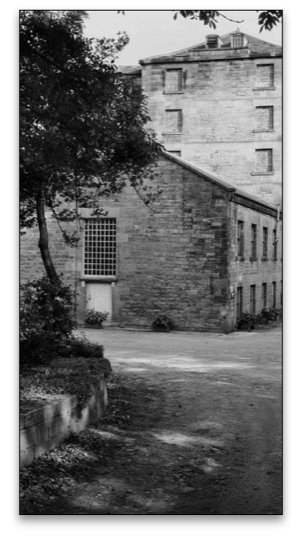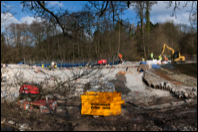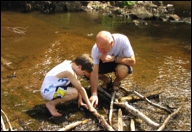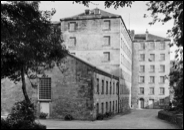Heritage
Both Calver Mill and Calver Weir are of significant historical interest, and might be considered an upstream extension of the Derwent Valley Mills World Heritage Site in Derbyshire.
Calver Mill and a small weir were built in 1778 by two local merchants, who wanted to licence new methods of cotton spinning from Richard Arkwright at Cromford Mill, downstream on the River Derwent .
The Derwent floods of 1799 swept away the weir, and then Calver Mill burnt down in 1802. Between 1799 and 1804, the owners built the imposing present-day Calver Mill. This also required a weir to impound the waters of the River Derwent, a goit to channel water to the mill, and the Shuttle House to control the flow of water entering the goit.
The above early 19th century weir (which was built across the river at the Shuttle House) was not a complete success, so in the 1840’s the present Calver Weir was built using gritstone from a local quarry.
Calver Mill continued using water-power until 1923, when cotton spinning ceased. (At this stage the weir was already in a poor state of repair).Since that time, Calver Mill has been used as a canning factory, a wartime storage depot and home to a manufacturer of stainless steel sinks. In the 1960’s it was portrayed as Colditz Castle in a television series. In 2000 it was acquired by developers and converted to private apartments.
The Old School House (at Stocking Farm) was built in 1817 as a Sunday school, but after the 1833 Factory Act it became a day school for the children of the workers employed in Calver Mill.





